- Overview
- Trip Outline
- Trip Includes
- Trip Excludes
- Gallery
- Reviews
- Booking
- FAQ
Highlights
-
-
- Enjoy the adventure walking at the foot of world number one Mt. Everest
- Grand views of mountains and beautiful landscapes from the start to an end
- Super flight to Lukla with awesome panorama of Himalaya with Mt. Everest
- Enjoy immense culture of Buddhism within Sherpa village with traditional life
- At Sagarmatha National Park world heritage site enriched with flora and fauna
- On top of high Kalapathar with spectacular views of Mt. Everest and giant peaks
-
AN ADVANTAGE OF BOOKING TRIP WITH ROYAL NEPAL GROUP
-
- All airports pick up drop by private vehicle (for both international and domestic flights)
- First aid kit box
- Royal Nepal Group provides sleeping bag, down jackets, T-shirt, cap, duffle bags for porter, city and trekking route maps – if necessary.
- Arrangement of emergency evacuation service (should have insurance for emergency evacuation and will be paid by your travel insurance company)
- Oximeter to check your pulse and oxygen saturation and heart rate twice daily during the trek (very useful to check Altitude Mountain Sickness (AMS) symptoms). This helps ensure your trek is in the safest hands possible.
13 Days Everest Base Camp Short Trek 2022/2023 - Best price guarantee, the most Popular and affordable adventure trekking tour
Short Synopsis of Everest Base Camp Short Trekking
Trip Introduction: Everest Base Camp Short Trek
Why 13 Day Everest Base Camp Trekking is considered to be the best?
Where and how the Everest Base Camp Trek gets started?
Which is the best season for trekking in the Everest Base Camp Region? How should I prepare?
Optional activates in Kathmandu before or after 13 Days Everest base camp trek
Important Note
- This trip departure every day of the year
- This trip is fully customizable. We can customize the trip as per your need, please contact us
- This trip is available on both Fixed Departure and Private Group Basis.
- This trip can be booked privately if you’re travelling solo or private or with family.
- Have a big group? We can help as per your needs.
- We can help you make it fit your budget.
- we accept instant booking and online payment
Short Base Camp short trek Itinerary Disclaimer:
The Everest Base Camp short Trek provides with standard Itinerary days where some days walks can be shorter or longer as per your physical fitness, some designated overnight stops can change, due to available rooms and other facilities and etc…….
We will follow the itinerary if its need to be changes in case of weather, landslides and difficulties on walks requiring more days where our leader and lead head guides decides holding full authority for Trekking Planner Nepal.
Everest Trek-Climate and Weather:
Himalayan climate can be unpredictable sometimes even in good best seasons, where April and May to first week of June will be the best time during spring times, when days are longer with enough sunlight hours.
Morning and nighttime as well in shade can be cold and much freezing temperatures around higher areas above 3,000 m.
Other months from September to November another great times for treks around Kanchenjunga base camp and other areas of Himalaya, when days are clear for views and to summit the top of the peak, although much colder months of autumn season with extreme cold during morning and night time, where sunlight is much shorter.
Everest base camp area - Local Culture and Religion:
Sherpa are the natives of Everest and other higher Himalayan region, the word “Sherpa” comes from Tibetan language. As East for Sher and Pa means people, where Sherpa migrated around high Himalaya of Nepal around Mid-East and Far Eastern Himalaya range from Eastern parts of Tibet.
Way back more than 400 years of history, the Sherpa normally are farmers and livestock herding like cows and yaks interwoven with strong Buddhism religion and fascinating cultures that you can witness walking around villages.
In every Sherpa villages, one can find a monastery, some are older of more than 500 years like the “monastery of Thame and Pangboche villages”, whereas the famous monastery of Thyangboche was much older which was destroyed by huge fire in 1991 and been built to its original shapes.
As you walk from a village to another, you will come across many prayer walls and religious monuments of Stupas (dome), with rows of spinning prayer wheels.
Sherpa men-folks were the earlier pioneers as mountain and trekking guides and still held the post till present.
Travel Insurance for Everest base camp short trek:
Royal Nepal Group strongly advises and recommends all clients to purchase Travel as well Medical Insurance against unforeseen circumstances that might arise or occur during your Himalayan holidays, where Travel & Medical Insurance should obtain through World Nomads Travel Insurance for your upcoming holiday in Nepal Himalayan destinations.
Whilst all our hikes, trekking, tour programs with itineraries where accommodation are all set in respective Hotels / Lodge / Home Stay, Guest House and Resorts even camping in some remote area as per the set program itinerary. Some days could be longer or could be shorter depending upon the fitness of the clients, availability of vehicle on time, flight delay, cancellation, unfavorable bad weather and roads or trail condition. Trekking Planner request Clients on booking to acquire Travel and Medical Insurance is compulsory undertaking any tour and treks. It should include adequate protection for tour / treks duration to cover personal injury, death, medical expenses, and repatriation expenses in any means of transportation on emergency evacuation such as helicopter rescue, air ambulance and adequate cover for baggage.
In this situation your selected and chosen tour destination may differ from the program itineraries. In rare cases we might even have to reroute or cancel the trips as per the political, riot, bad weather, broken road or trail condition and porter's situation and condition. The company has the right to cancel the trips due to unavoidable condition and beyond our control including if the volume of travelers is less than expected as per the trips selected. In this case, please bear with us we will try our best to adjust the itinerary trips as best as possible for your convenience.
Altitude Sickness-Everest trek
Altitude Sickness can affect anyone. At high altitude, the decrease in atmospheric pressure makes breathing difficult due to less oxygen. Mainly, it happens above 3300m (10,000ft). Signs and symptoms are as follows:
- Headache/Dizziness
- Nausea/vomiting
- tiredness/fatigue
- Sleepy but can’t sleep
- Loss of appetite
Prevention for this is to dress warmly as per weather conditions, drink plenty of water, eat well, and walk slowly. It is a good idea to climb higher than you sleep. Keep hydrated and make sure you avoid alcohol.
Washing and Toilet facilities for the Base Camp Trek:
All guest houses offer hot showers, which can be a shower stall or a bucket of hot water. Please note that at high altitude there may not be enough hot water for all the trekkers. Limit the use of hot water unless the water is solar heated for ecological reasons. Every lodge has some kind of washing facilities but you must carry a bar of soap. If the water is frozen simply ask your guide to get warm bowl of water.
Toilets are mainly Asian style squat toilets. Toilets are outside of your room. You are in the mountains: Cleanliness will vary. You should not throw toilet paper in the toilet. Instead use rubbish bin.
Itineraries
Day 1
Arrival in Kathmandu (1350m/4430ft)/Group meeting
You’ll be received at the Tribhuwan International Airport in Kathmandu by a representative of Nepal Trekking Planner and escorted to the hotel for your stay after you shall complete the necessary formalities at the customs. After refresh at your hotel get some briefing about the trip that is to begin and about this beautiful nation. We are checking all the equipment for the trek. If something it’s not appropriate enough we can provide, rent or help to buy it here. If you have any question regarding your trip you could ask. Stay overnight in Kathmandu.
Included accommodation in Kathmandu (Hotel moonlight/Kathmandu Guest House/Apsara Boutique hotel)and standard meals (welcome Dinner)
Day 2
Flight to Lukla (2828m/9279ft) 35m and trek to Phakding (2780m/9121ft) 3-4 hrs walk; walking Distance: 9 km / 5.50 miles
Organize your trekking equipments and pack your bags the day before, as we shall leave early for Lukla which is the gateway to the Everest. Led by trekking guide, we shall reach Lukla from the scenic flight in a carefully loaded twin otter that shall mark the adventure in the region. Aerial view of the vast landscape with lush valleys and hills, view of the glittering mountains, serpentine shaped rivers weaving the settlements and valleys and dramatic sight of the terraced hills makes this flight entertaining. After landing in the Tenzing-Hillary Airport in Lukla and meeting with other trek members, we embark on an introductory trek to Phakidng. In the route used traditionally by various communities and traders to trade with Tibet, we shall move ahead in the trail. Trek begins with the steep descent to Chheplung village past stone walls, we reach to Thado Koshigaon. Crossing a suspension bridge, the journey shall continue on to Phakding through small settlements, viewpoint of Kusum Kangaroo, past prayer wheels and prayer flags, dense forest, diverse flora and fauna, besides the caravan of trekkers and climbers, porters and locals in and out of the Khumbu valley. Stay overnight in Phakding.
Included standard accommodation and meals (Breakfast + Lunch + Dinner), Tea/Coffee
Day 3
Trek to Namche Bazaar (3440m/11287ft) 5-6 hrs walk, walking Distance: 12 km / 7.45 miles
Our trekking continues along the majestic and torrential Dudh Koshi River towards the ancient trading hub of Namche Bazaar. Starting with the first view of Kongde Ri Peak and through some suspension bridges the trail turns to the beautiful Benkar valley past beautiful waterfall, ancient gompa and lush forests decorating the surroundings. At Benkar we enjoy the view of Thamserku (6623m) and the sacred Khumbila Peak (5765m) before stopping briefly at Monjo, the gateway of Sagarmatha National Park. Moving ahead through Jorsale village we reach to Larja Dobhan, cross high suspension bridge over the confluence of Dudh Koshi and Bhote Koshi and embark on the trail that goes steep till Namche Bazaar. Enroute to Namche we have the view of majestic peaks such as Everest (8848m), Lhotse (8516m) and Nuptse (7879m) providing some relief during the ascent on the steep section. Namche Bazaar is famous for being the buzzing Sherpa town, and perfect town for acclimatization and hub for day hikes, having superb surrounding and scenery as well as rich cultural heritages. Stay overnight in Namche Bazaar.
Included standard accommodation and meals (Breakfast + Lunch + Dinner), Tea/Coffee
Day 4
Rest day at Namche Bazaar
In the day set aside for rest, we shall take on activities that shall help us acclimatize faster for our trekking journey ahead. In a town known for its colorful and lively nature, Namche has interesting shops and buzzing Saturday market, tasty cuisines and beautiful scenery as well as warm welcoming Sherpa people and the unchanged characteristics of this town since ages. Visit to the Sherpa cultural museum for detailed information on mountaineering in the region, flora and fauna, history and geography of the Himalayas, and the culture and traditions of the local inhabitants. Before the weather creates hurdle, get involved in an early day hike to one of the nearby destinations. Everest View Hotel that provides the marvelous view of the Mount Everest Lhotse, the beautiful Ama Dablam and other nearby peaks, the twin villages of Khumjung and Khunde known for ancient monasteries with old age heritages and school and hospital built by Edmund Hillary Foundation, are the popular day hike destinations from Namche Bazaar. After exploring the surrounding areas, prepare for the trekking ahead. Stay overnight in Namche Bazaar.
Included standard accommodation and meals (Breakfast + Lunch + Dinner), Tea/Coffee
Day 5
Trek to Tengboche (3850m/12632ft) 4-5 hrs walk, walking Distance: 10 km / 6.21 miles
Trekking to the higher altitudes, we shall start our walk with a short but steep climb out of the Namche Bazaar before trekking on a fairly leveled trail to reach the settlements of Kenjoma and Sanasa through the dense forest and other vegetation, view of the mighty Everest and occasional exchange of greetings with fellow trekkers from other expeditions. After the trail junction leading to the Gokyo valley and the Everest base camp, we head down to the riverbed of the mighty Dudh Koshi River and climb on to Phunke Tenga through several bridges and some hamlets. Marked by water driven prayer wheels, Phunke Tenga generally serves as the resting place before taking on the steep trail leading to Tengboche. In a climb of around one hour and a half to two hours, ascent to Tengboche takes you in a twisting tail built on the hill through rhododendron forest. Take it easy when you go for such uphill climb as you are now heading to higher altitude where you definitely won’t want to be affected with altitude mountain sickness. In Tengboche visit the ancient monastery famous for celebration of Mani Rimdu festival, huge statue of Lord Buddha, intricate wall paintings and peaceful chants by the monks, the breathtaking scenery of the majestic mountains (including Kwangde, Tawache, Everest, Nuptse, Ama Dablam, Lhotse, Kantega and Thamserku Peaks) where blooming rhododendron flower contrasts with its color. Stay overnight in Tengbohe.
Included standard accommodation and meals (Breakfast + Lunch + Dinner), Tea/Coffee
Day 6
Trek to Dingboche (4350m/14272ft) 4-5 hrs walk, walking Distance: 12 km / 7.45 miles
Leaving the amazing sunset and sunrise of Tengboche, today we shall head for another interesting village of Dingboche. Through the forest we descent from Dingboche to reach the village of Deboche that provides beautiful views of lofty Everest, Ama Dablam, Lhotse, Nuptse and others. We head on in the trail through the sighting of Musk Deer, Monal and Blue Sheep and cross the exciting suspension bridge over Imja River before reaching the settlement of Panchboche. Ancient stupa in the upper Pangboche, surrounded by trees, is a stoppage worth a short visit. Ahead in the trail we have alpine vegetation as we move through landscape with scrub juniper and tundra until we reach Dingboche. The trekking section through Somare is rather flat; after this village we cross a suspension bridge and follow the Imja River upstream as we part our way from the trail to Pheriche. Further ahead in the trail we reach Dingboche where the trail from Lobuche to the Island Peak climb meets. Dingboche is a small village with stone walled houses, cultivation fields and the exquisite view of Lhotse, Island Peak and Ama Dablam. Stay overnight in Dingboche.
Included standard accommodation and meals (Breakfast + Lunch + Dinner), Tea/Coffee
Day 7
Rest day Dingboche
In another day of rest and acclimatization in this trekking expedition, we shall have an important day before reaching to the ultimate destination of this trip. The day will be utilized by short hikes to higher altitudes to adapt ourselves to higher altitudes. Hike to Nangkartshang Gompa provides the trekkers with breathtaking views, opportunity to get insight into the heritages such as intricate paintings, Thangka and Yeti scalp and hand. Explore the valley formed by mighty Imja River and the beautiful trail leading to the Island peak. Short hike to the hill behind Dingboche is another option which provides us with the view of couple of six-thousander peaks. After exploring the breathtaking surrounding, capturing memories of the valley, we return for the overnight stay. Stay overnight in Dingboche and prepare for the next day trek.
Included standard accommodation and meals (Breakfast + Lunch + Dinner), Tea/Coffee
Day 8
Trek to Lobuche (4910m/16109ft) 4-5 hrs walk, walking Distance: 12 km / 7.45 miles
This section of trekking begins with gradual ascent from the settlement of Dingboche and come across grazing areas of cattle and the beautiful mountains to the far makes the trek pleasant. Trekking past chortens, Mani walls and stupas, we move forward with the view of beautiful Tabuche Peak (6495m), Ama Dablam Mountain and many more, glacial valleys and vast landscape before we climb onto the valley of Dughla, last settlement before traveling further to the base camp. Ahead of this is the most poignant section of today’s trek. An hour of trek leads us to the height of the high ground overlooking the Khumbu valley, called Chukpo Lari, where monuments are built in remembrance of the mountaineers who lost their life during their expedition to conquer Everest. The trail then descends to the western side of the valley after walking over the glacial moraines of the majestic Khumbu Glacier. Stay overnight in Lobuche.
Included standard accommodation and meals (Breakfast + Lunch + Dinner), Tea/Coffee
Day 9
Trek to Gorakshep (5180m/16995ft) 3-4 hrs walk and Everest Base Camp (5364m/17600ft) 2-3 hrs walk, walking Distance: 15 km / 9.32 miles
This is the day you are waiting for! Today we shall be heading for the Everest Base Camp as the destination. Be careful for the acute mountain sickness in this altitude and trek accordingly. The trek from Lobuche begins early in the morning after breakfast. We reach Gorakshep after trekking over the lateral moraines of the Khumbu Glacier past the Italian research centre, the rocky paths, cautiously avoiding the ice pinnacles and occasional crevasses in the Khumbu region. The trail ascends over the Lobuche Pass and then reaches to the section sandwiched by large glaciers of Changri Nup and Khumbu. Shortly ahead is the awaited gorakshep, our stoppage for lunch and the place of overnight stay for today. After refreshment we head for our ultimate destination, the Everest Base Camp. Through the rocky path and on the New Moraine Route, we trek to the base camp. Flooded with the tents and camps of the climbers in the peak season, Everest Base Camp is the destination of lifetime. The euphoric feeling of being there is beyond words and to be in the lap of the world’s tallest peak is something extraordinary. After capturing the memories of these extraordinary moments, we return back to the Gorakshep. You shall get completely lost in the beauty of the sunset visible from the base camp. Stay overnight in Gorakshep.
Included standard accommodation and meals (Breakfast + Lunch + Dinner), Tea/Coffee
Day 10
Trek to Kala patthar (5545m/18193ft) 2-3 hrs walk and to Pheriche (4280m/14042ft) 5-6 hrs walk, walking Distance: 13 km /8.07 miles
Get ready for another beautiful trekking day in the roof of the world as we trek to the Kala Patthar before making a return to the lower altitudes. Before the day breaks, we shall today get ready with our equipments and go for one of the most beautiful sunrises you will ever see. In a straight trek from Gorakshep to this small brown hill dwarfed by the Himalayas, we shall have the close up view of the mighty Everest. Ideal for photographers, the sight of Himalayas including Mt, Pumori, Lhotse, Nuptse and Changtse Peaks, the majestic Khumbu Glacier and the south-east face of Everest. Reach for the higher point of this black hill and capture as many memories as you can. After this extraordinary scenery, trek down to Gorakshep for lunch before heading down to Pheriche. We shall descent gradually from Gorakshep , in ups and downs and through the rocky terrain before taking exit from the vicinity of Everest at Dughla and walking straight to Pheriche. Through the damp valley floor covered with moss, from the alpine vegetation to the sub-alpine vegetation this trek is mostly a downhill walk. Stay overnight in Pheriche.
Included standard accommodation and meals (Breakfast + Lunch + Dinner), Tea/Coffee
Day 11
Trek to Namche bazaar (3440m/11287ft) 4-5 hrs walk, walking Distance: 14 km /8.69 miles
The return from the vicinity of Everest continues as we depart from the beautiful Periche to the busy hub of Namche Bazaar. In this mostly downhill trek, we now are with the company of the torrential Dudh Koshi River. Our trek will be rather gradual as we won’t want to put much strain on our shaky legs and ankles. In this busy trekking trail, we shall encounter caravan of fellow trekkers, porters, locals and their pet animals like Yak used for transporting goods; make sure you give way to them. Through the beautiful and dense forests, waterfalls, exciting and sometimes vertiginous suspension bridges festooned with prayer flags, flat and bumpy trails, gompas and monasteries, rural settlements and the culture and traditions practiced there are some of the major highlights of this section of the trek. Water driven prayer wheels, viewpoints of the Himalayas, sights of rare wild animals and strenuous stone steps shall take us to the destination of Namche Bazaar. Explore the busy streets of this ancient trade point and the current tourist hub as you take rest for today in this beautiful village. Stay overnight in Namche Bazaar.
Included standard accommodation and meals (Breakfast + Lunch + Dinner), Tea/Coffee
Day 12
Trek to Lukla (2828m/9279ft) 5-6 hrs walk, walking Distance: 21 km /13.0488 miles
This section of a trek is the last of such trekking in this adventurous journey that climaxed in the base camp of Everest. Descent on a steep trail out of the Namche Bazaar to descent at the riverbed of a confluence of Dudh Koshi and Bhote Koshi River and after crossing over the high suspension bridge, we reach to Monjo where we exit the Sagarmatha National Park. Through the beautiful Benkar and past waterfalls, several suspension bridges, unique, busy and interesting villages including the popular ones such as Phakdng, Ghat, Nurning and Chheplung, Mani walls and prayer wheels, we trek up to the hill town of Namche Bazaar. The beautiful and humongous Himalayas overlooking the entire trail acts as the motivation for trekkers; they find purpose of trekking in the sight of mountains. After reaching Luka, get yourself relaxed and explore the surrounding areas of hotel, if you are interested. Stay overnight in Lukla.
Included standard accommodation and meals (Breakfast + Lunch + Dinner), Tea/Coffee
Day 13
Fly back to Kathmandu (1350m/4430ft )
Today we shall return to the medieval capital city of Kathmandu after an adventurous stay in the Khumbu (Everest) region. Due to the weather related disturbances during the day, we shall take on the flight that starts early morning from Lukla. Over the vast landscape, lush hills and valleys, perennial rivers and with the sight of glittering Himalayas, the flight of around 35 minutes brings us back to the civilization of Kathmandu valley. You shall be transferred to the hotel of your stay for the much deserved rest after enduring a rather strenuous trek in the Khumbu region. Later in the evening you may stroll around in the streets of Thamel and the surrounding areas. Stay overnight in Kathmandu.
Included standard meals (Breakfast ) and Tea/Coffee
Day X
Your Plan
INCLUDES
-
- All airport pick up drop by private vehicle (for both international and domestic flights)
- 01 night twin/double sharing accommodation in Kathmandu.
- Kathmandu to Lukla to Kathmandu flight with airport departure tax
- National Park entrance fee and Trekkers’ Information Management System( TIMS card)
- A highly experience, helpful, knowledgeable, friendly, English speaking, well-trained, Government license holding guide. Price includes his salary, food, drinks, accommodation, transport and insurance.
- 02 guest to 01 porter with their insurance, salary, food, accommodation and equipment
- twin/double shearing lodge accommodation in the mountain during the trekking
- Three meals a day; breakfast, lunch and dinner and tea/coffee during the trekking.
- Snacks of biscuits/peanuts and seasonal fresh fruits dessert after dinner during the trek
- All applicable government and local taxes per the itinerary
DOESN'T INCLUDE
-
- Your Nepal Visa fees (should bring small accurate fees in USD and 02 passport size photos)
- All the International air fare from and to Kathmandu (no need to pay departure tax for international flight)
- All meals and accommodation in Kathmandu
- Meals during the traveling time
- Personal travel and health Insurance, Insurance for helicopter evacuation
- In case of extra more nights accommodation, lunch and dinner in city due to early arrival and late departure as well as early back/return from mountain/trekking (due to any reason) than the given time period of itinerary
- Your Personal expenses such as ( laundry, baggage charge, phone calls, battery recharge, bar and beverage bill, boiled or bottle water, hot and cold shower, extra porter.. etc)
- The Tips to the trekking crews and drive
- Extra expenses due to flight delays, strikes, weather condition or any event out of our control
- Anything not included in service includes column
13 days Everest Base Camp short trek is not that difficult as it sounds for many people, as long you take your normal steady and easy pace.
However, Everest base camp and all Himalayan countries involves ups and downhill. Depending upon the itinerary days to cover the whole trek, where Trekking Planner has flexible itinerary days. So that all trekkers can make most of the day enjoyable walks, providing acclimatization days where needed on high altitude.
Starts with an easy gradual trail with few short ups and down from Lukla town after arriving on a short scenic flight. With not much difficulty, on the second day to Namche Bazaar, the last hour is all ups from the river bed for near two hours or more. Where one can take it slowly with frequent rest and acclimatize along with grand scenery.
The next uphill walk after Namche Bazaar to reach Tengboche Monastery, where the afternoon starts with winding up for two hours, again taking short rest and admiring the views will make your day enjoyable.
Solo traveler or FIT (Free Individual Traveler) are on their own either with guide and porter, or with only guide cum porter.
But when joining with a group of trekkers can be interesting making friends of different nationalities, and keeps you busy knowing each other or sharing your knowledge with each other.
Each individual in a group differs sometimes, some are close friends and couple or just a solo traveler joining in the group.
Certainly, all trekkers requires to obtain travel and medical insurance for safety purposes. One can never know what befalls ahead, some might can be very ill from diarrhea or altitude sickness known as AMS (Acute Mountain Sickness).
Where the victims need to be evacuated immediately by any means of quick transport like on Helicopter, where all your medical bills will be reimbursed by your insurance depending upon the nature of insurance policy.
Another reason for travel insurance, just in case the trip can be obstructed by bad weather, where trek needs re-route the destination or might get canceled.
Where flight to Lukla operates on good fine weather, if the flight gets delayed or canceled it will affect the whole itinerary days. Where you’re insurance can cover most of your expenses.
Depending upon each individual and how fit and strong you are, normally altitude does affect many trekkers with slight headache, where one can get acclimatize taking slowly, sleeping well and having meals.
If your doctor or leader recommends you taking Diamox, which should be taken on the very first day of the trek, and till the end of the journey to Lukla.
But if you are in good health, and take the walk slowly no need for Diamox as it has some side effects also, making your finger numb.
All strong drugs including sleeping pills should be avoided at high altitudes, as it can lead to severe consequences and disorder to your body, Ibuprofen is a pain killer, can be taken on the advice of your doctor or group leader.
Well you never know in countries like the high Himalaya, in case of emergency situation where victims need immediate medical attention and safe evacuation on the quickest possible means, like calling for helicopter service.
If someone gets very sick or injured on treks taking care utmost care of the victim with immediate medical facilities to the nearest hospital available and then evacuate to a better medical center or hospital at Kathmandu, taking a Helicopter depending upon the seriousness of illness and injuries.
Nearly all seasons of the year that one can trek, but the main good times in mid-spring (March to May) and autumn/fall and pre-winter (mid-September to mid of December months)
During mid-spring time of March till May and from autumn season in the month of mid-September to November. These are the high and peak times for Everest Base Camp and all-around Himalaya.
Can be quite busy, where one needs to book much earlier so that we can arrange necessary details like booking hotels in Kathmandu, local lodge on trek as well for air-tickets flight to Lukla and back.
It depends upon how you spend it, on booking with full payment all main hotel and lodge accommodation are included, with meals on treks and service of guides and porters.
The only extra money required for your personal expenses such as having extra drinks and snacks, as well for souvenir buying.
If you are a beer drinker and other hard drinks, one needs to carry extra more like NRS 10 to 20, 000 more on top of average money to carry on trek minimum of NRS 10,000.00. As well as reserve money in case of flight delay at Lukla and other main expenses like gratitude or tips for the trekking staff, guide, and porters.
You can buy souvenirs like handicrafts, trinkets, T-shirts and bags with emblem of the area of trekking. Money matter regarding your interest if you want to buy some souvenirs or for other side drinks and snacks.
Minimum of NRS 10, 000.00 and Maximum of NRS 20,000. As well carry your credit card which you can cash at Namche Bazaar in banks or at ATM where available.
Can I drink the water on the trek or buy it all the way to base camp? How much water should I drink?
Yes, of course, one can drink safe water, buying a liter or more drinking water on the lodge or on route walk around local lodge and restaurants, where you will be served with boiled and filtered water which is very safe.
One can buy bottled water, but can be very expensive as you go to higher areas which will be more double and triple the amount that you buy in Kathmandu.
As we are very much involved in Responsible Tourism and Eco-Trekking we try to discourage trekkers from buying bottled water, as it is a plastic bottle that adds more garbage for the country to cope with and as well much expensive.
Unless you are very desperate and sick, you can buy the bottled water, to keep fit as per medical advice on high altitude, one needs to consume a minimum of 2 liters per day.
If it’s too much to carry from home, one can purchase some trekking gear in Kathmandu or hire, such as Down Jackets and Sleeping bags.
Where you can purchase almost all items from torch/flashlights to goof quality aluminum water bottle, etc…………….
Extra baggage that is not necessary for Everest base camp trek can be stored in the hotel, as well as valuable and documents in the hotel locker or with Royal Nepal Group.
Namaste is the formal greetings as well a farewell gesture in Nepal, while visiting temples and monasteries, ask your guide when taking photograph if it’s all right.
As some holy places do not allow a photo to be taken, respect all religions and local culture. When visiting monasteries or temples wear suitable and appropriate dress, especially for ladies.
Always use the right hand for greetings and handing or receiving items.
In good normal and average to high standard hotels, lodges, and resorts foods are served of international standard quality, as well in many smaller nice lodges. No need to bring your food except for some smaller nick-knack like dry fruits, candies, or similar for your own personal use.
Yes, you can but not while heading up towards Everest base camp, as alcohol can give you worse effect on your body, and dehydrates you.
It is best to stay away from alcohol including beer, but on the way down after reaching your destination, you can enjoy beer or any other alcoholic drinks.
Nearly all types of snacks are available, depends upon where you are, for instance in major villages there are general stores and shops,
As well the lodge restaurants can serve you snacks from French Fry, noodle varieties, bread, biscuits to Pringles or packet juice.
Yes, showers hot and cold available in nearly all lodges that you stay for overnight stops. Where you need to pay extra for the shower. Bathrooms are neat and clean but smaller than the hotel in Kathmandu.
There are bathrooms and toilets in all villages lodge on route to base camp till Gorakshep the last settlement before base camp.
You can charge your electronics gadgets in all lodges on this trek, where electric power is run by hydro or personal/private solar energy. Yes, you can bring your laptop on this trek to EBC.
Yes, but not in all villages or local settlements WIFI available in major hotels, lodge-like at Lukla, Phakding, Monjo, Namche Bazaar, and Tengboche including Dingboche and at Lobuche.
Sometimes the network is slow, and disturbing in some areas due to weather and places that is located on deep valley and gorge.
Nearly, in all places where you can get cell phone services and even with re-charge card the main popular and widely used us Ncell and NTC or Namaste.
Sometimes the network is slow, and disturbing in some areas due to weather and places that are located on deep valley and gorge.
After or before booking this trip to EBC Trek, one can train like jogging, swimming, and taking Jumba or Aerobic classes, as well as walking up and down a staircase. As all Himalaya is with more ups and downs.
You can train at least a minimum of a week or more before and after you sign up for the trek and as well for trip departure from home.
Trekking Planner is a government licensed trekking company in Nepal. You can see photos of legal documents in about us section. We accept your booking under following terms and conditions:
Bookings must be done 48 hrs. in advance
Free Cancellation
No Down payment
No Deposit
Accept Cash Payment, Bank Transfer, Western Union, Money Gram, or a Credit Card.
For more information see our Terms and Conditions page.
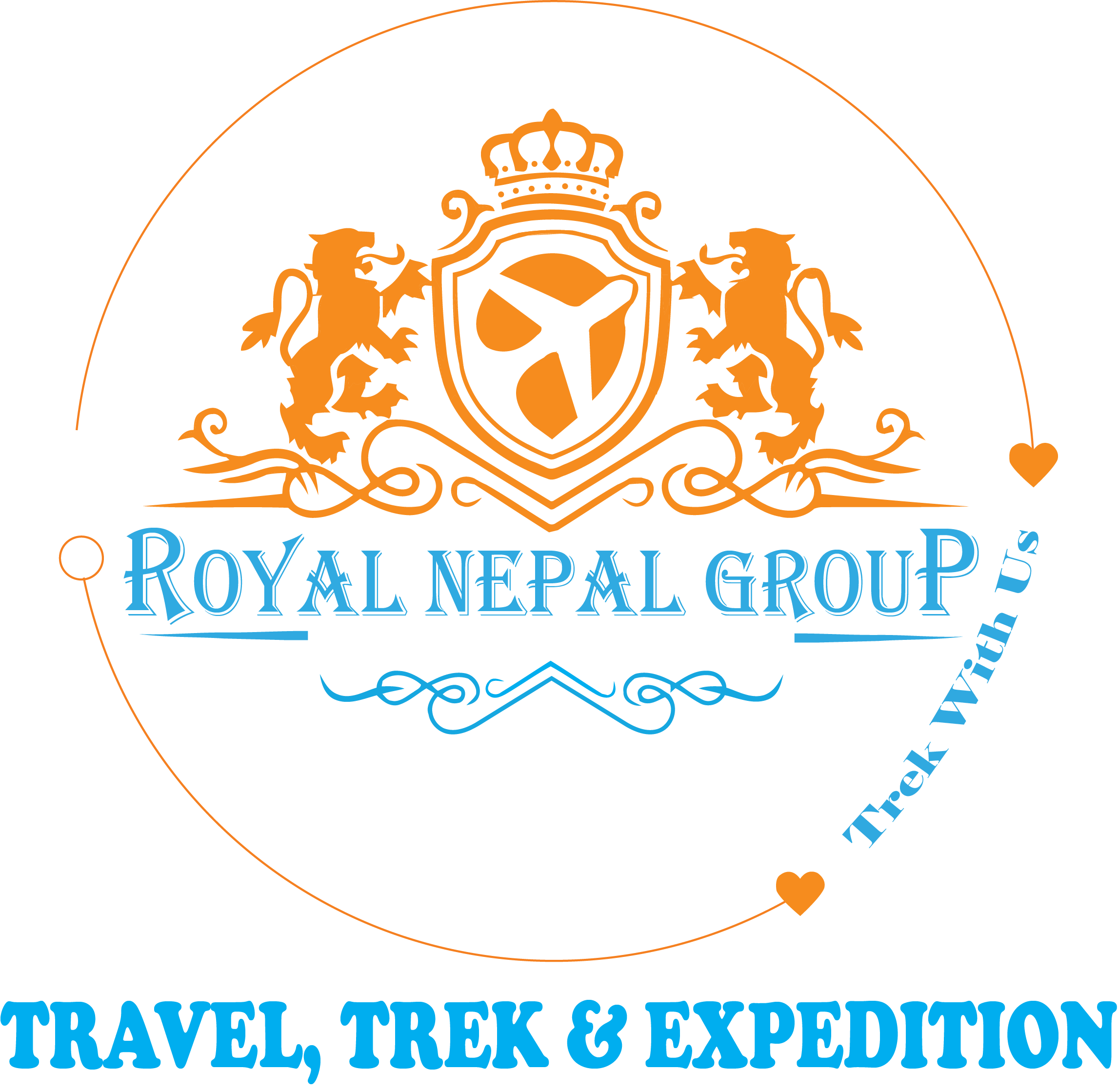
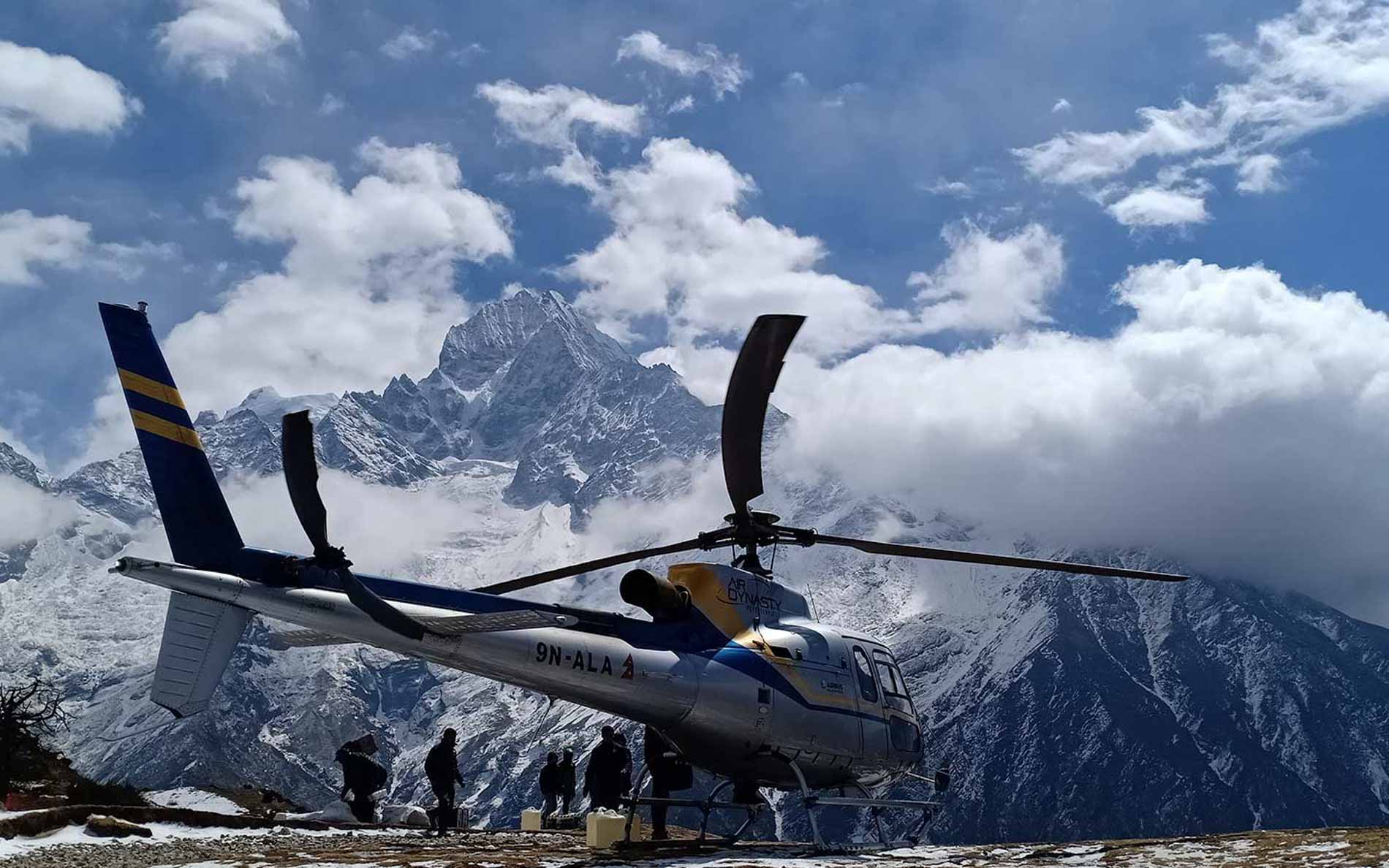
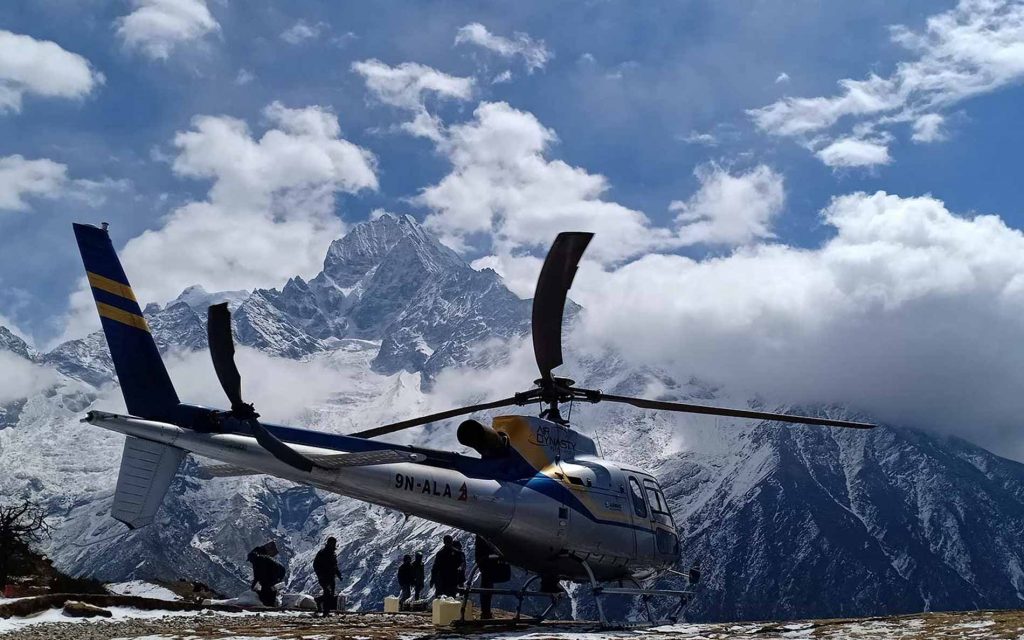
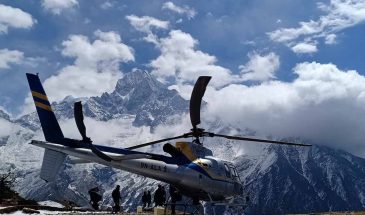

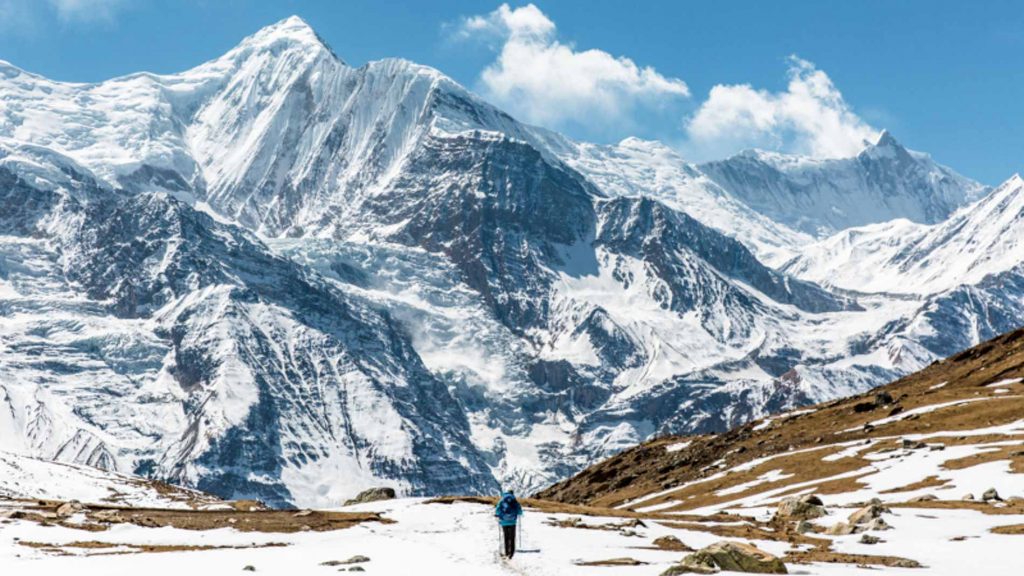
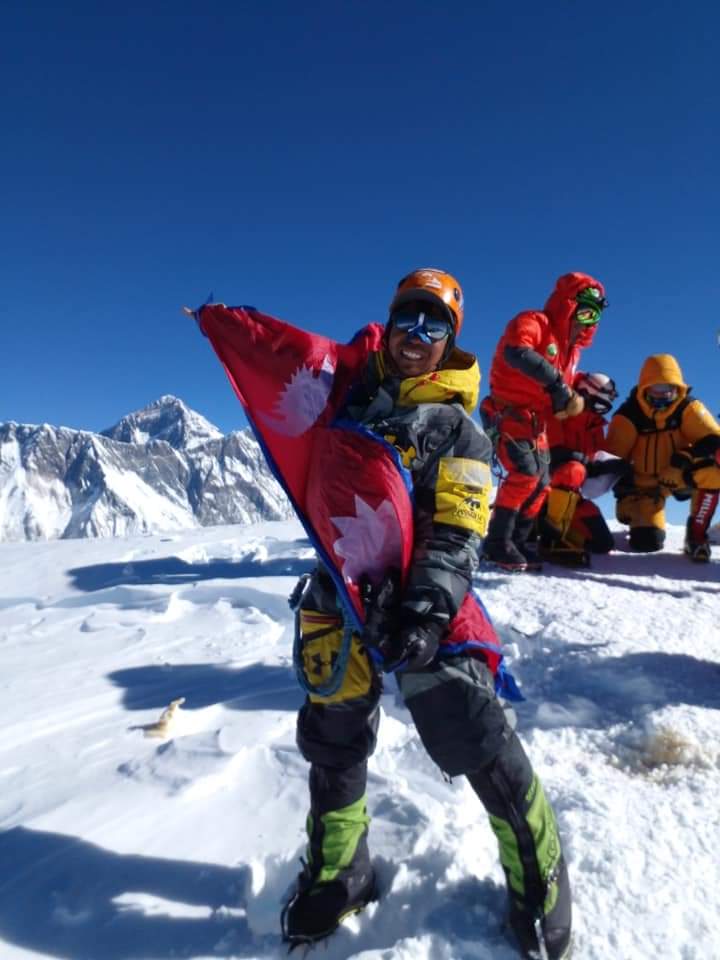

There are no reviews yet.